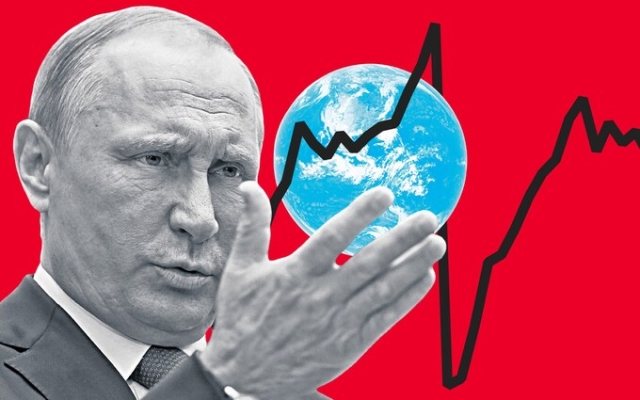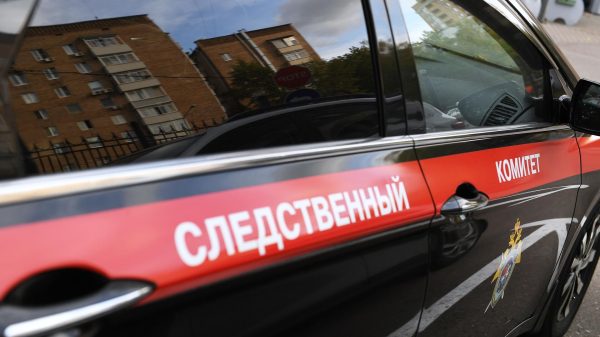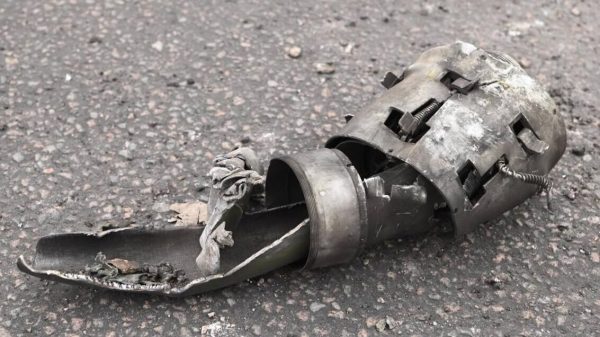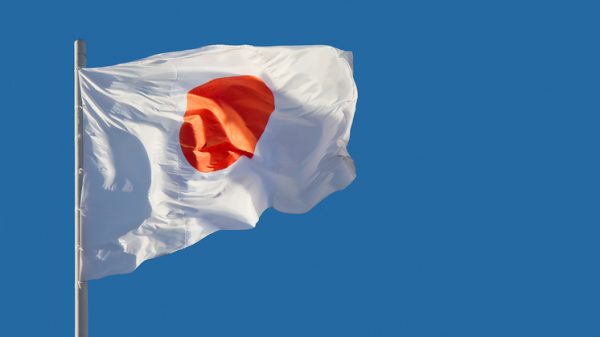
Western sanctions on Russia are tougher than ever and their impact is clearly visible in trade numbers.
Germany's exports to the country fell by 54% in the first six months of this year compared to the same period in 2019, according to an analysis by the Institute for International Finance (IIF).
In the early months of the war, Russian imports plummeted as the West turned its back. In dollar terms, monthly imports in March 2022 decreased by 30% compared to the same period last year.
However, within a few months, it recovered.
“Imports have fully recovered from the impact sanctions,” says Liam Peach, Senior Emerging Markets Economist at Capital Economics.
What happened?
In part, Putin turned to his allies. . While exports to Russia from Western countries such as the US, UK and Germany have declined, trade with friendly countries such as Turkey, China and India has risen.
However, analysts say Moscow, also seems to have discovered a very successful workaround.
1908 Russian imports return to pre-war levels
Putin turned to friendly countries to help him gain access to foreign goods, importing Western goods through other countries to confuse paper trail and circumvent sanctions.
Take Kyrgyzstan. Germany's exports to the small landlocked country that is part of the Eurasian Economic Union and has a free trade agreement with Russia grew by 2,000% in the first half of this year.
“The German Customs Agency responded to us and said that we checked these transactions, and they are legitimate, ”says Robin Brooks, chief economist at IIF.
“Paper documents have been checked. But no one upstairs says, «Hey, wait a minute, this is totally weird.» Because the last time I checked, there was no boom in Kyrgyzstan.”
The IIF tracks exports across a group of Central Asian countries: Armenia, Azerbaijan, Belarus, Kazakhstan, Kyrgyzstan, Tajikistan, Turkmenistan, and Uzbekistan.< /p>
p>
Exports from Germany and the United States to this group of Central Asian countries grew by 11.5% this year compared to 2019 levels. Polish exports to the group grew by 27%. In Lithuania, a 37% increase in exports to Central Asia more than compensated for a drop in exports to Russia.
Brooks believes that increased exports to Kremlin-friendly countries in Central Asia are a sign that they are being used as loopholes to Russia.
“The question arises whether goods sent to Central Asia ever touch land ' Brooks says. “Perhaps this is just paperwork, but in fact the goods go directly to Russia.”
Boom in Central Asia in 1908
In support of his theory, he points to the fact that Germany exports more to Kyrgyzstan than the Central Asian country sets records for imports.
“There are things that just evaporate,” says Brooks.
This gap has widened over the past year and a half. “This suggests that Kyrgyzstan is just a phantom destination,” says Brooks.
In his opinion, the Baltic countries, such as Lithuania and Estonia, are also “hotspots” for trade diversion. So does Poland.
Peach agrees that the evidence suggests Kyrgyzstan has «become a conduit for trade from parts of the Western world.»
“The fact that exports from Western Europe travel to a small, landlocked place like Kyrgyzstan suggests a clear regime change. Of course, the growth rate of exports to Central Asia is crazy. This certainly leaves open the possibility of official intervention.”
The Kremlin certainly approves of these new trade routes. Russian President Vladimir Putin introduced a parallel import program in May 2022 in response to a growing list of international sanctions.
The program focused on a list of Western goods that Putin said could be imported via secondary trade routes. This includes goods needed by industry, automobiles, machinery, and some consumer goods such as cosmetics and clothing.
The Parallel Import List effectively gave Russian businesses the right to seek alternative trade routes for these goods.
< p>“You needed the approval of the Russian government to say you could buy these Western goods,” says Peach. .
1908 The value of British exports
2.4 million tons of goods worth more than $20 billion (£15.7 billion) were imported into Russia under the parallel import scheme during its first six months of operation, according to central bank data. .
Since then, imports have only grown, and the list of products included in the scheme has expanded.
“It's reasonable to assume that the value of these parallel imports has now likely doubled in the last 12 months,” Peach says. .
These phantom imports can account for up to 40% of Russia's annual output, which is typically just over $100 billion.
These new trade routes come at a cost, however.
р><р>“Central Asia has no access to the sea. It has never been a mall for anything,” says Brooks. Thus, transport costs are high and the additional bureaucracy associated with exports is also costly.
Last year, the cost of the Apple iPhone in Russia increased by almost 50% compared to the pre-war period.
«Many of these Western products that were freely available before the war are now much more expensive,» says Peach from Capital Economics. They are also much harder to get, even if they are still coming to Russia.
Brooks argues that Western countries need to seriously think about how effective Moscow's parallel import scheme is and take action.
< p>“We got these completely insane trading numbers because no one is adding up all the numbers and saying something is going on here,” he says.
He believes policymakers should develop rules to stop rampant trade diversion . If companies profit from increased sales to Kazakhstan, they are likely to profit from increased sales to Russia.
Perhaps the simplest and most effective solution would be to limit revenues from Russia, Brooks said. “So everything is back to lowering the marginal price of oil.”
Peach says: “Last year the sanctions weren't effective. Maybe they were in some parts of the economy, but in general, the story of last year was one where Russia rode the wave of the energy price boom, and it saved the economy pretty much.
“Now we are at a time when sanctions can really bite. The West is in a position where it can put much more pressure on Russia.”
Meanwhile, Kyrgyzstan's trade continues to grow.






















































Свежие комментарии